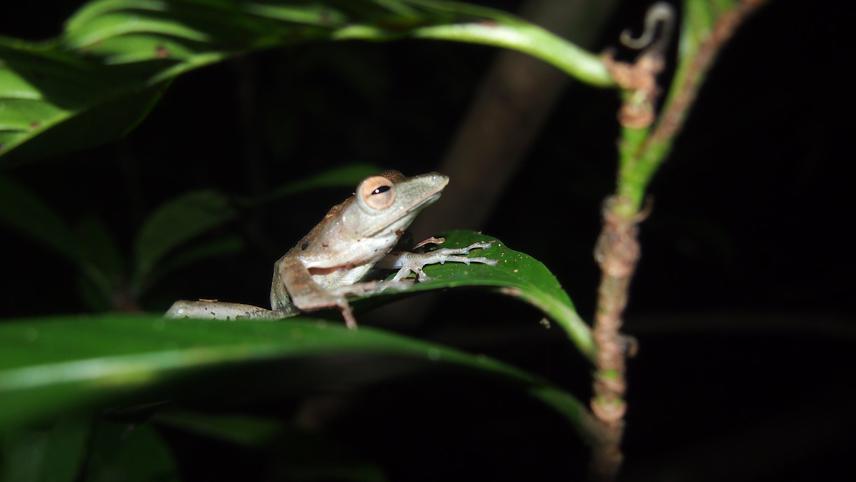Juan Manuel Aguilar Leon
Understand the genetic consequences of fragmentation, identify areas of high phylogenetic biodiversity and whether fragmentations leads to altered assemblage composition.

Polypedates colleti.
Destruction of habitat and the elimination or interruption of wildlife corridors can have a major impact on plant and animal species. Across the globe, forest harvesting and shifting cultivation practices have degraded forest quality, but commercial logging and agriculture, in particular for oil palm (Elaeis guineensis), are now the major causes of forest and biodiversity loss, especially in the tropics of Malaysia and Indonesia in Southeast Asia, a region with 11% of the world remaining tropical forest. Just the state of Sabah in Malaysia holds 109 species of Anura (frog and toads), representing more than 73% of the total species in Borneo, with a degree of endemism of approximately 17%. Anura belong to the most threatened class of vertebrates, and currently we are losing its biodiversity at unprecedented rates. It has been estimated that more than 41% of described anuran species are at risk of extinction either by habitat loss and degradation, climate change and chytridiomycosis.
Most of our current knowledge of Bornean amphibians is derived from the Malaysian states of Sabah and Sarawak, and Brunei Darussalam with very few published accounts from the larger Indonesian region of Kalimantan. Relative to other vertebrates present within Borneo few studies have been conducted on frogs and there are even fewer studies focusing specifically on frog population dynamics and genetics; therefore there are large gaps in information on the basic structure of frog communities within lowland fragmented secondary tropical forest in the region. This information is needed in order to manage anuran species sustainably, understand the effects of fragmentation and ensure that larger scale decisions on protected area management includes action for anurans.
The goal of my research is to study the genetic and ecological consequences of forest fragmentation and oil palm monoculture with special reference to Anura in the Lower Kinabatangan Wildlife Sanctuary (LKWS) and area where habitat fragmentation due to oil palm plantations has occurred during the last 30 years. My project will analyse patterns of genetic variation among populations of three target species elucidating the genetic structure across fragments. I will identify areas of high phylogenetic diversity for all the frogs in my study area to understand the way in which evolutionary relationships are patterned and identify whether fragmentation leads to altered assemblage composition.